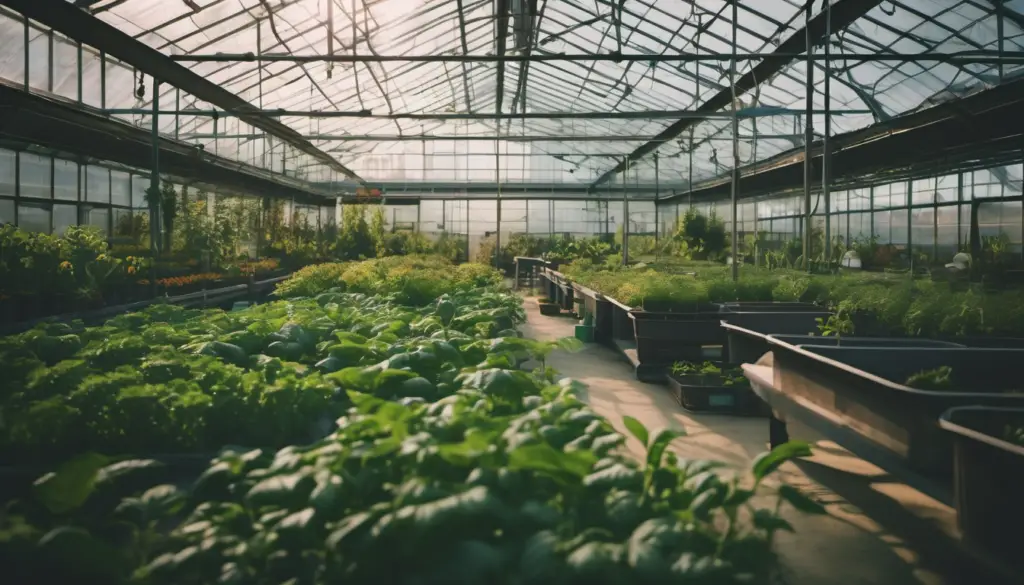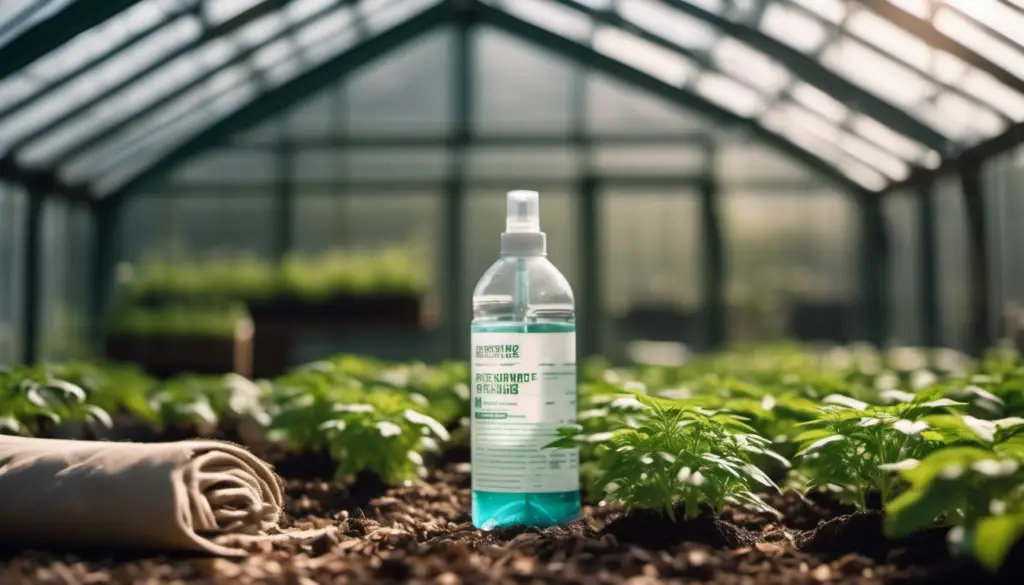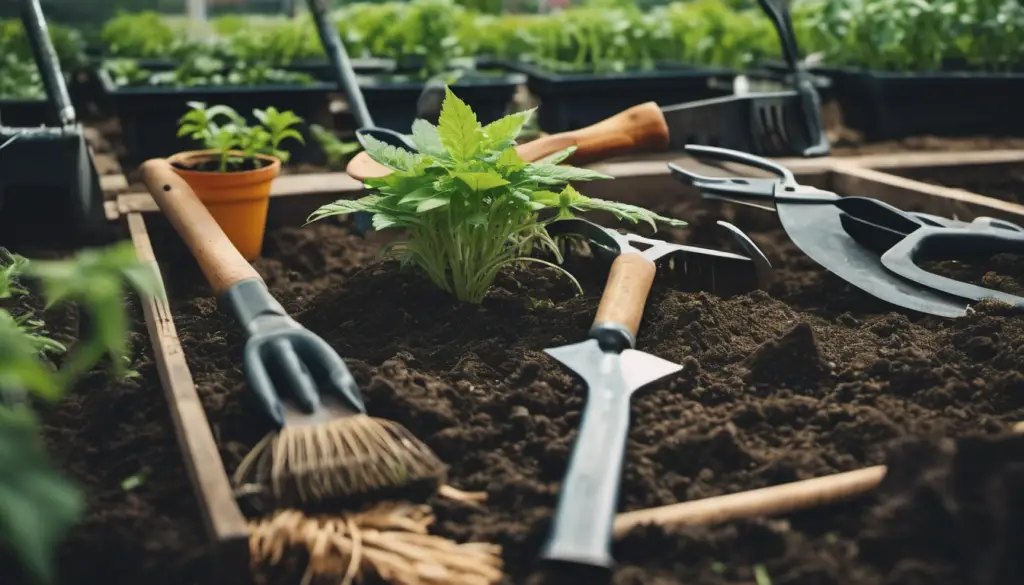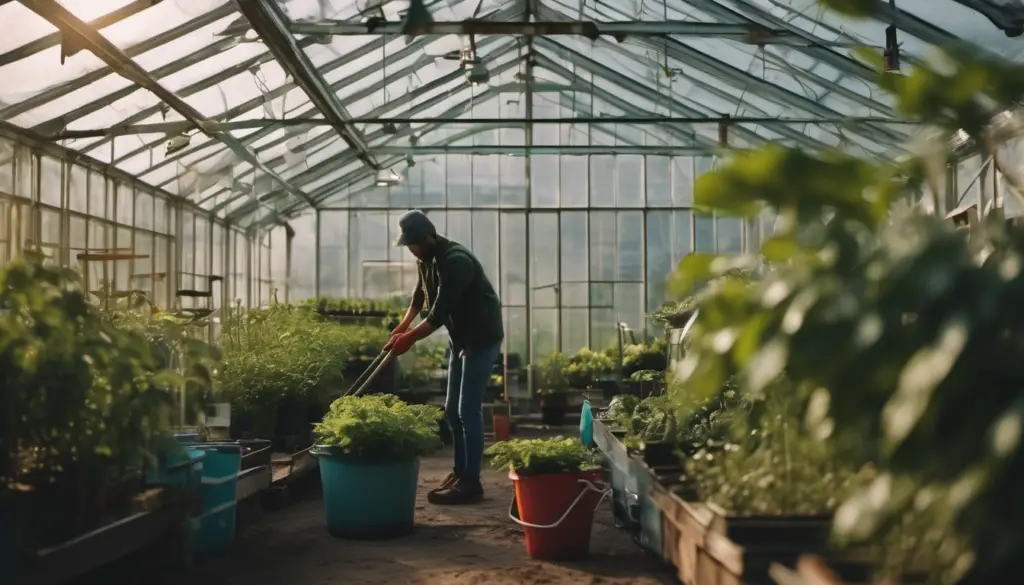Gardening within the serene environment of a greenhouse can be a rewarding experience, but it’s not without its challenges. Among these, the persistent issue of weed infestation stands out as a common source of frustration for many greenhouse enthusiasts. Weeds, uninvited and tenacious, have a knack for popping up where they are least wanted, transforming the joy of greenhouse gardening into a tiresome battle. This struggle is not just about aesthetics; it’s a critical fight for the health and well-being of your cherished plants.
Effective weed control is pivotal in maintaining a healthy greenhouse ecosystem. Weeds are more than just unsightly; they are competitors that battle with your plants for essential resources such as nutrients, light, and space. This competition can hinder the growth and health of your plants, compromising the productivity and harmony of your greenhouse. Therefore, understanding and implementing effective weed management strategies becomes a cornerstone in ensuring the vitality of your greenhouse garden.

In this post, we will delve into various effective strategies to control weeds in your greenhouse. From preventive measures like proper sanitation and soil sterilization to active interventions such as manual weeding and the judicious use of herbicides, we’ll cover a comprehensive range of methods. Additionally, we’ll explore integrated weed management techniques that combine different approaches for more effective control. By the end of this guide, you’ll be equipped with the knowledge and tactics needed to maintain a weed-free greenhouse, ensuring your plants thrive in an optimal environment.
Importance of Weed Control in Greenhouses
Weeds are not just minor nuisances; they pose a significant threat to the health and productivity of your greenhouse. These unwanted plants compete aggressively with your cultivated plants for vital resources. By drawing away nutrients from the soil, monopolizing sunlight, and encroaching on the space needed for growth, weeds can severely impact the development and health of your greenhouse plants.
The impact of weeds goes beyond just resource competition. They can also be a breeding ground for pests and diseases. Weeds often attract insects and harbor fungi or viruses, which can easily spread to your cultivated plants. This makes effective weed management not just a matter of plant health, but also of plant protection.
The benefits of maintaining a weed-free greenhouse are numerous. Firstly, it ensures that all the nutrients, light, and space within your greenhouse are exclusively available to your plants, facilitating better growth and higher yields. Weed control also contributes to a more organized and aesthetically pleasing greenhouse environment, which is important both for the health of the plants and the satisfaction of the gardener. Additionally, a weed-free environment reduces the risk of pest infestations and disease outbreaks, leading to healthier plants and potentially reducing the need for chemical interventions.
In the following sections, we will explore various methods and strategies to effectively control weeds in your greenhouse, ensuring your plants have all the resources they need to flourish without the competition and risks posed by these unwelcome invaders.
Preventative Measures
One of the most effective strategies in controlling weeds in a greenhouse is to prevent them from establishing in the first place. This proactive approach involves a combination of sanitation practices, soil sterilization methods, and the use of physical barriers.
Sanitation Practices: The cornerstone of preventive weed control in greenhouses is maintaining stringent sanitation practices. This starts with ensuring that the soil or growth medium brought into the greenhouse is free from weed seeds. Regular cleaning is essential; remove plant debris, fallen leaves, and other organic materials that can harbor weed seeds. Tools and containers should be cleaned and sanitized before use to prevent the inadvertent introduction of weeds. Additionally, inspect new plants for weed seeds or seedlings before introducing them into the greenhouse.

Soil Sterilization: Sterilizing the soil is an effective way to kill weed seeds and pathogens. Soil solarization, a process where the soil is covered with a clear plastic tarp to trap solar heat, can effectively sterilize the top layer of soil. This method is most effective during the hottest part of the year. Another option is to use commercially available sterilized potting mixes, especially for container gardening, to ensure a weed-free growing medium.
Barrier Methods: Physical barriers can effectively prevent weed growth. Landscape fabric, when laid on the greenhouse floor, acts as a barrier to weed emergence while still allowing water and air to permeate. Additionally, mulches made from organic materials like straw or wood chips can be spread around plants. These not only suppress weed growth but also help in retaining soil moisture and adding organic matter to the soil as they decompose. However, it’s important to use mulches that are free from weed seeds.
Mechanical and Manual Weed Control
Despite preventive measures, some weeds may still find their way into your greenhouse. When this happens, mechanical and manual methods are your first line of defense.
Hand Weeding: Hand weeding is a safe and immediate way to remove weeds, especially when they are young and small. The key is to be gentle to avoid disturbing the roots of your desired plants. Hand weeding is most effective when the soil is moist, as weeds can be pulled out more easily. Regularly walking through your greenhouse and removing weeds as soon as they are spotted can significantly reduce their population over time.
Tool Use: For larger or more stubborn weeds, tools like hoes or weed pullers can be effective. Hoes are useful for cutting weeds at the soil level, but they should be used with caution to avoid harming the roots of nearby plants. Weed pullers, on the other hand, are designed to remove the entire weed, roots and all, which is especially useful for perennial weeds. When using these tools, it’s important to strike a balance between effective weed removal and minimizing soil disturbance, as excessive disturbance can bring dormant weed seeds to the surface and promote new weed growth.

Regular use of these mechanical and manual methods, in conjunction with preventative measures, forms a comprehensive approach to managing weeds in your greenhouse. It’s a continuous process that requires vigilance and dedication, but the reward of a healthy, weed-free greenhouse is well worth the effort.
Chemical Control Methods
While mechanical and preventive measures are crucial in weed control, there are scenarios where the use of chemical herbicides becomes necessary. In a greenhouse setting, the selection and application of herbicides require careful consideration to ensure both effectiveness and safety.
Safe Use of Herbicides: When selecting herbicides for greenhouse use, it’s important to choose products that are labeled for greenhouse application and suitable for the specific types of plants you are growing. Always read and follow the label instructions meticulously. This includes adhering to the recommended application rates, wearing protective gear, and ensuring proper ventilation during and after application. Herbicides should be applied carefully to target only the weeds and avoid contact with desired plants. It’s also crucial to consider the potential for herbicide residue to affect sensitive plants and to be aware of any restrictions on planting after application. Spot treatments are often preferable in a greenhouse setting, as they allow for more targeted and controlled application.
Organic Options: For those seeking environmentally friendly alternatives, organic herbicides or natural solutions can be effective. Vinegar-based sprays, for example, can be used to control young, non-woody weeds. The acetic acid in vinegar works as a contact herbicide, causing dehydration of plant cells. Another option is saltwater sprays, which can desiccate weeds. However, both vinegar and salt can affect soil pH and salinity, so their use should be limited and carefully managed. It’s also important to note that these natural solutions may require repeated applications to be effective and are generally more suitable for young, small weeds.

Integrated Weed Management
The most effective weed control strategy in a greenhouse integrates multiple methods, tailored to the specific needs and conditions of your environment. This integrated weed management (IWM) approach combines preventive, mechanical, and, when necessary, chemical methods to manage weed populations effectively.
Combining Methods: An IWM approach might start with strong preventive measures like sanitation and soil sterilization, followed by regular manual weeding and the use of tools as needed. Chemical control methods are then used as a last resort, focusing on targeted applications with careful consideration of safety and plant compatibility. This multifaceted approach ensures that weed control is effective, sustainable, and minimally invasive to the desired plants.
Regular Monitoring: Central to the success of IWM is regular and thorough monitoring of the greenhouse. Regular inspections help in early detection of weed problems, allowing for prompt action before weeds become established or spread. This not only makes weed control more manageable but also reduces the reliance on more aggressive control measures. Monitoring should be seen as an ongoing task, integrated into the routine care and maintenance of the greenhouse.
By employing an integrated weed management strategy, greenhouse owners can effectively manage weed problems with a balanced and thoughtful approach, ensuring a healthy and productive growing environment for their plants.
Maintenance and Long-Term Strategies
Maintaining a weed-free greenhouse is an ongoing process that requires regular attention and long-term strategies. Consistent maintenance and a focus on fostering a healthy plant environment are key to minimizing weed problems over time.
Regular Cleaning: Keeping the greenhouse and its immediate surroundings tidy is essential in weed control. Regularly remove plant debris, spent flowers, and fallen leaves, as these can harbor weed seeds and create a conducive environment for their germination. Cleaning should also extend to the area around the greenhouse. Ensure that the external perimeter is free from weeds and debris, as these can be a source of weed infestation. Tools and equipment should be cleaned and sanitized regularly to prevent the spread of weed seeds from one part of the greenhouse to another.

Monitoring Plant Health: A greenhouse filled with robust, healthy plants will have a natural advantage over weeds. Vigorous plants compete more effectively for light, nutrients, and space, leaving fewer resources available for weed growth. Therefore, regular monitoring and maintaining the health of your plants is crucial. This involves proper watering, fertilization, and pest control, as well as ensuring that plants have enough space for growth. Healthy plants not only reduce the likelihood of weed problems but also contribute to the overall productivity and aesthetic appeal of your greenhouse.
Conclusion
Controlling weeds in a greenhouse is a multifaceted task that involves a combination of preventive measures, mechanical and manual weed removal, careful use of chemical herbicides, and an integrated weed management approach. Regular cleaning and maintenance, along with vigilant monitoring of plant health, play pivotal roles in maintaining a weed-free environment. These strategies not only help in managing weeds but also contribute to the overall health and productivity of your greenhouse.
Implementing these strategies requires dedication and regular effort, but the reward is a thriving, healthy greenhouse environment. Whether you are a seasoned greenhouse gardener or just starting, applying these methods will significantly enhance your gardening experience. Remember, a little effort in weed control goes a long way in ensuring the vitality and beauty of your greenhouse. So, roll up your sleeves, embrace these practices, and enjoy the journey of cultivating a vibrant, weed-free greenhouse.
